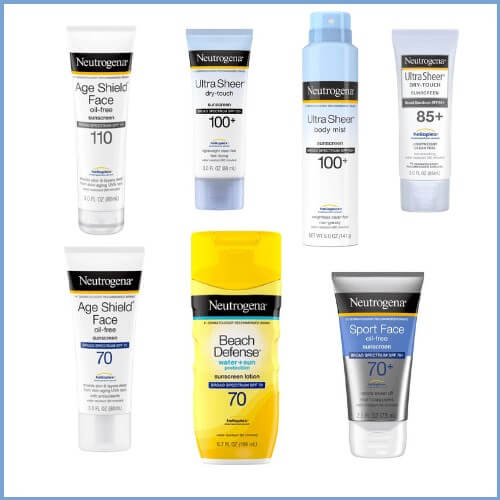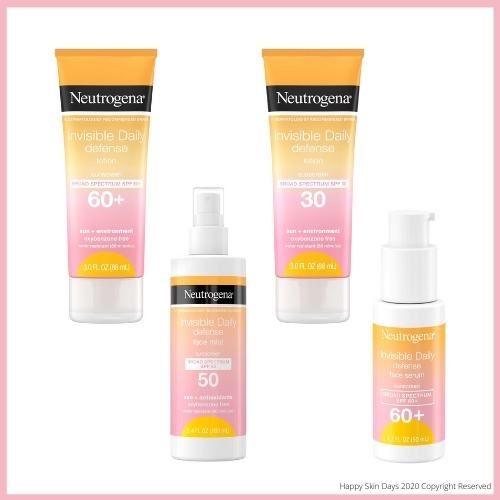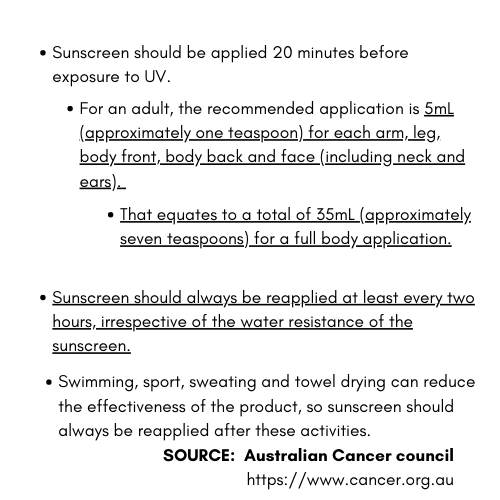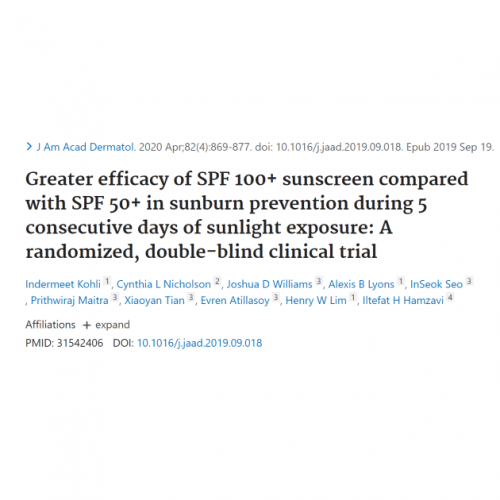Introduction
Today’s SPF 100 study is published in a reputable scientific journal, the Journal of American Academy of Dermatology.
In a nutshell the study concludes that SPF 100 better protects against erythema than SPF 50.
If you are a regular reader of this blog, you’ll know that I abhor SPF 100 sunscreens. Its as if the existence of anything SPF 100 viscerally offends me. (It does).
Despite my personal views, its critical to put this study in context.
Putting context
1) The FDA’s spanner in the works
In the USA, (which is where said study originates), archaic sunscreen regulation needs to be modernized. This is old news. The US FDA (relevant supervisory body) published a monograph ages ago, proposing to cap sunscreens at SPF 60+. Such a move would be detrimental to the many manufacturers in the USA which sell SPF 100. For example, Neutrogena.

Source: Neutrogena USAThe FDA’s rationale is, “Given the lack of data showing that sunscreens with SPF values above 60 provide additional meaningful clinical benefit, however, we are proposing not to allow labeled SPF values higher than 60+.”
Essentially, the FDA don’t have clinical data supporting SPF 100 claims.
In the same monograph, the FDA highlight how different labels produce varying SPFs for SPF 100 sunscreens. The FDA writes, “this same study also evaluated a scenario where a lab was not told the target SPF, but was rather given a range of SPF 20 to 100 for a product with an expected SPF of 100. The results showed that it was extremely difficult for labs to reproduce the labeled SPF 100, with mean SPF values ranging from 37 to 75. ame study also evaluated a scenario where a lab was not told the target SPF, but was rather given a range of SPF 20 to 100 for a product with an expected SPF of 100. The results showed that it was extremely difficult for labs to reproduce the labeled SPF 100, with mean SPF values ranging from 37 to 75. We note that variability in SPF values is exacerbated at high SPFs. “
2) Industry response
The study in question is paid for by Johnson & Johnson, which owns Neutrogena.
My view
I could and should stop writing now because this study is clearly biased and self-serving based on its funding alone.
However, the basis of the study itself is its Achilles Heel and I am compelled to highlight that to you.
***OFFICIAL GEEK ALERT****
The study….
Pertinent points of the study are:
- Fifty-five participants split into two groups of 27 and 28 people spend a minimum of 3.5 hours on a beach for 5 consecutive days.
- An initial application of SPF 100 and SPF 50 is slathered on.
- There is no further monitoring of sunscreen application (if any).
- The main finding is there less erythema on the sides of the body using SPF100+ vs SPF 50.
- Said study concludes that more investigation of SPF 100 sunscreens is required.
My more than twopence on this study
This study makes it sound as if SPF 100 is a panacea to all our sun-damage woes. Its not. And its very tempting to berate SPF 100 sunscreens but that’s plain dumb.
No-one is disputing the efficacy of correctly applied SPF 100 in preventing erythema.
In fact, the folks who designed this study understood this so well, that the, “Initial application of (pre-weighed sunscreen) took place 15 minutes before first sun exposure each day and was supervised.”
Behaviourial issues in using sunscreen
SPF 100 only holds if the correct amount of sunscreen: 2mg/cm2 is applied.…I have never met anyone who can correctly eyeball this amount. Therefore, it should come as no surprise that studies persistently show:
- People typically apply 0.5 to 1.2 mg/cm2 of sunscreen in real life instead of the 2 mg/cm2 dosage prescribed in SPF test.
- The cosmetic elegance of a sunscreen determines how much we apply. If a sunscreen is easier and less chalky and less gunky, people apply closer to the 2 mg/cm2 dose.
Sunscreen and thickness of application
In a previous blog, in the context of SPF 50, I have highlighted that a 50% reduction in sunscreen applied, does not result in a 50% reduction in SPF – so SPF 25.
SPF 50 can very quickly become SPF 17 – SPF 37. Therefore, at its worst its a 66% reduction in SPF 50.
Applying similar reduction rates to SPF 100, it becomes SPF 34 – SPF 66.
Admittedly, that is not too shabby a result, except for my next point about prolonged exposure
High SPF products encourage risky sun-seeking behaviour
The International Cancer Agency has found that when people use high SPF sunscreen products, they intentionally expose themselves to larger doses of UVR.
I take that to mean that folks all of a sudden think they have some type UVR resistant skin. If they never normally step out during mid-day Chennai or New Delhi summer’s, they all of a sudden think that wearing SPF 100+ allows them to do so.
It doesn’t. Sunscreen just reduces the exposure to UVR – it doesn’t eliminate UVR risk. And as UVR damage is cumulative, intentional exposure to UVR only increases the risk of photoaging (wrinkles, hyper-pigmentation, loss of elasticity etc etc).
Conclusion
I sometimes feel that sunscreen manufacturers do try and throw everything (including the proverbial kitchen skin) to maintain the status quo. However, even they hedge their bets and know when change is inevitable: I have attached a photo of Neutrogena’s new launch sunscreens, which are SPF 60+, making them consistent with the FDA’s current thinking.

All that remains is to leave you with the famous words of the Australian Cancer Council:

Sources and uses
Kohli I, Nicholson CL, Williams JD, Lyons AB, Seo I, Maitra P, Tian X, Atillasoy E, Lim HW, Hamzavi IH. Greater efficacy of SPF 100+ sunscreen compared with SPF 50+ in sunburn prevention during 5 consecutive days of sunlight exposure: A randomized, double-blind clinical trial. J Am Acad Dermatol. 2020 Apr;82(4):869-877. doi: 10.1016/j.jaad.2019.09.018. Epub 2019 Sep 19. PMID: 31542406.
Couteau C, Paparis E et al, Influence on SPF of the quantity of sunscreen product applied, International Journal of Pharmaceutics, Volume 437, Issues 1–2, 1 November 2012, Pages 250-252
Heerfordt IM. Sunscreen use at Danish beaches and how to improve coverage. Dan Med J. 2018;65(4):B5476.
Hedayat K, Ahmad Nasrollahi S, Firooz A. Quick and brief review: Comparison between different in vivo SPF determination methods. J Cosmet Dermatol. 2019;18(6):1617-1623. doi:10.1111/jocd.12941
Williams JD, Maitra P, Atillasoy E, Wu MM, Farberg AS, Rigel DS. SPF 100+ sunscreen is more protective against sunburn than SPF 50+ in actual use: Results of a randomized, double-blind, split-face, natural sunlight exposure clinical trial. J Am Acad Dermatol. 2018;78(5):902-910.e2. doi:10.1016/j.jaad.2017.12.062
Linden KG. Commentary: Sunscreen sun protection factor (SPF): Is higher better?. J Am Acad Dermatol. 2018;78(5):911-912. doi:10.1016/j.jaad.2018.02.056
Liu W, Wang X, Lai W, et al. Sunburn protection as a function of sunscreen application thickness differs between high and low SPFs. Photodermatol Photoimmunol Photomed. 2012;28(3):120-126. doi:10.1111/j.1600-0781.2012.00650.x
Teramura T, Mizuno M, Asano H, Naito N, Arakane K, Miyachi Y. Relationship between sun-protection factor and application thickness in high-performance sunscreen: double application of sunscreen is recommended. Clin Exp Dermatol. 2012;37(8):904-908. doi:10.1111/j.1365-2230.2012.04388.x
Schalka S, dos Reis VM, Cucé LC. The influence of the amount of sunscreen applied and its sun protection factor (SPF): evaluation of two sunscreens including the same ingredients at different concentrations. Photodermatol Photoimmunol Photomed. 2009;25(4):175-180. doi:10.1111/j.1600-0781.2009.00408.x
Kim SM, Oh BH, Lee YW, Choe YB, Ahn KJ. The relation between the amount of sunscreen applied and the sun protection factor in Asian skin. J Am Acad Dermatol. 2010;62(2):218-222. doi:10.1016/j.jaad.2009.06.047
Rohr M, Ernst N, Schrader A. Hybrid Diffuse Reflectance Spectroscopy: Non-Erythemal in vivo Testing of Sun Protection Factor. Skin Pharmacol Physiol. 2018;31(4):220-228. doi:10.1159/000488249
Bimczok R, Gers-Barlag H, Mundt C, et al. Influence of applied quantity of sunscreen products on the sun protection factor–a multicenter study organized by the DGK Task Force Sun Protection. Skin Pharmacol Physiol. 2007;20(1):57-64. doi:10.1159/000096173
